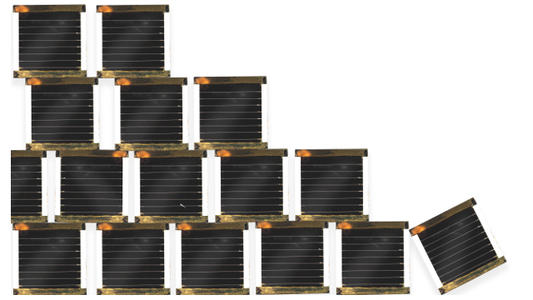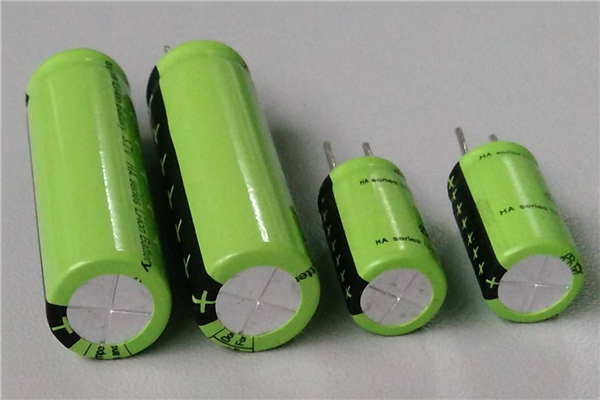Lithium ion battery demand-What you need to do
Sep 05, 2019 Pageview:990
Lithium batteries are now available in several shapes and sizes. But despite this difference in availability, they are all similar on the inside and how they operate and are lighter than other batteries of the same capacity in weight. The growing interest in batteries with high vitality, safety, and the low energy consumption is the key element in the development of the lithium battery market. Lithium batteries are a preferred option for device users since it is a compact power source due to their high vitality and low power consumption. The use of lithium-particle batteries in the Automotive Division for Half Electric Vehicles (PHEV) and Battery Electric Vehicles (BEV) increases productivity and reduces vehicle maintenance costs. These applications include electric vehicles, materials, and computer hardware, application in the marine industry, robots, and advanced applications, frameworks of multimedia transmissions, ESS framework, and military applications, including GEO, LEO and MEOspecials.
Lithium-ion battery demand 2019
Although competing technologies, like the flow and solid-state batteries, are seeking to capture a large share of the energy storage market, they face significant challenges competing with lithium ions batteries, since users and manufacturers prefer Lithium-ion batteries. Lithium-ion battery purchase prices have dropped by 85% since 2010. As technology becomes more economical, demand for these batteries is growing in several new market segments.
Massive investments have continued to go into many lithium-ion production plants. According to Bloomberg NEF, the global production capacity of this technology has almost tripled within the past five years and many new lithium-ion battery factories are under construction in the United States and across the world.
With these reduced costs and these new technology investments, lithium ions have shown promise to remain the best rechargeable energy storage solution into the near future.
Due to the growing popularity of the use of electric vehicles, the increase in the demand for lithium-ion batteries has been impressive and is only just beginning. The growth rate in volume is on the average of 25% and higher than 15% in value.
The electrification of vehicles is by far one of its most important application, although the total penetration of electric vehicles is only about 2%, it is also used in devices like remote controls, toys, and some devices needing a constant power supply, like mobile phones.
For Electronic Vehicle applications, almost all players agree to the fact that lithium-ion batteries will be the preferred technology for the next 10 - 15 years. Most of the big players believe that there will be more development and improvement of lithium-ion batteries, but are not anticipating a revolution.
Some of the market observers estimate that by 2030, every battery will consist of at least 10% recycled materials, and if the market today is looked into carefully, this projection seems realistic. By 2030, it is expected that the demand for lithium-ion battery will be around 1,200 GWh. Considering the average lifespan of a battery is around 10 years, this might just be the next big thing.
Lithium-ion battery market size and growth
The lithium-ion battery market is projected to have a CAGR of around 22% over the forecast period (2019-2024). The main factors driving this market are the emergence of exciting new markets for electric vehicles and energy storage systems (ESSs), and also for commercial and residential applications, lower cost prices for purchasing lithium-ion batteries, which also has driven down the cost of production.
The automotive industry dominated the lithium-ion market in 2018 and this domination isn’t expected to drop over the forecast period and this is due to its demand for high energy density, fast charging capability and high discharge performance of the battery. Lithium-ion batteries are the only known technology available to provide such energy demand for such heavy machines, (that is to say, the OEM requirements of EV’s can only be met by lithium-ion batteries.)
The recycling of lithium-ion batteries should ensure the continuous supply of its raw materials, like the lithium and cobalt used, and also reduce the dependence on the extraction and refining of materials from various mineral resources. The recycling of lithium-ion batteries currently used in electric vehicles provides companies with an excellent opportunity to use their refined components to produce more lithium-ion batteries that will be used in energy storage systems (ESS).
The Asia-Pacific region has dominated the global market and the largest contribution has always come from countries like China and India.
Recent market trends show that Li-NMC batteries are currently the most used type of lithium-ion batteries. Traditionally, equal parts of nickel, manganese, and cobalt, are used in the making of Li-NMC batteries. This mixture is currently moving into the formula 5:2:3 (i.e. 5 parts nickel, 3 parts manganese and 2 parts cobalt). Many companies are now focusing on using research and development to cut down on the cobalt oxide content while increasing the nickel content of their batteries. The primary goal is to meet the adoption of 8:1:1 blend.
Lithium-ion battery trend and forecast
The lithium-ion battery market is expected to have a CAGR of 10.10% during the forecasted period (2019-2024). The main drivers of market growth are the accelerating demand for electric cars, the increasing demand and use of portable consumer electronics, the growing demand of the glassmaking industry and a lot more others.
In 2018, as earlier stated, the world’s largest consumer of Lithium is the Asia-Pacific region and a majority of this consumption comes from china. As you may have known, there are salt lakes in the Qinghai Province of China.
It is also expected that the Indian Lithium market will experience significant growth within the forecasted period after China. This rise in lithium battery usage has been brought about by the increase in the various technological advancement in the world today.
Japan is another promising region doing well in the lithium-ion battery market as well as Korea, after China and India, the former using up a massive 96% market share as per the battery capacity shipments.
It is expected that emerging economies will consume more lithium-ion batteries in several end-use products. And because of the increase in populations, there is a forecast of an increase in the acceptance of lithium-ion batteries as solar and thermal energy is adopted in various regions like Pakistan, Bangladesh, Nepal, Sri Lanka, Cambodia, Laos, etc.
- Prev Article: Lithium Ion Battery Degradation Mechanisms-Science Magic
- Next Article: Lithium-ion Battery Gauge-Measuring Instrument Introduction
Leave Message
Hottest Categories
-
Hottest Industry News
-
Latest Industry News











